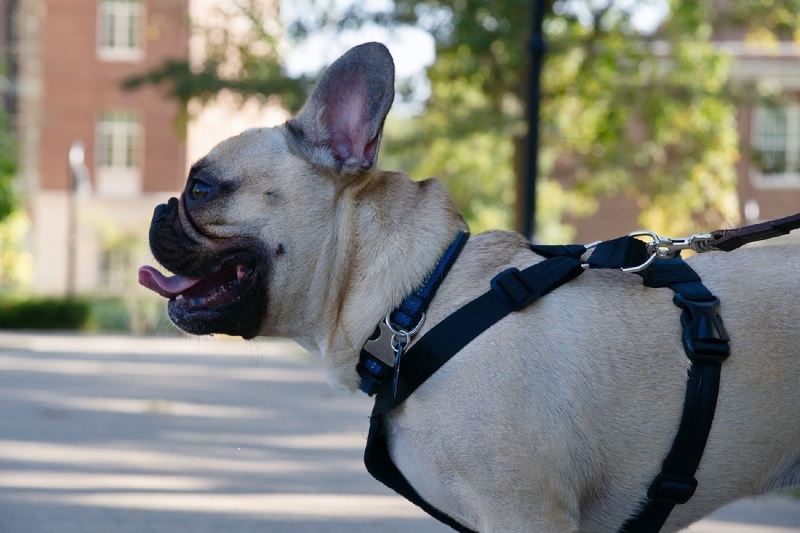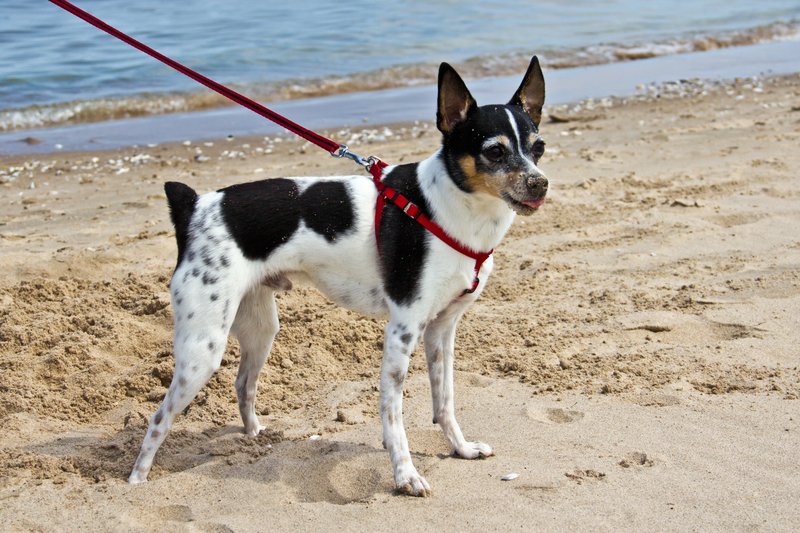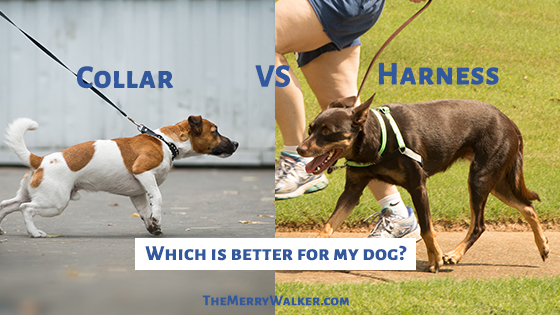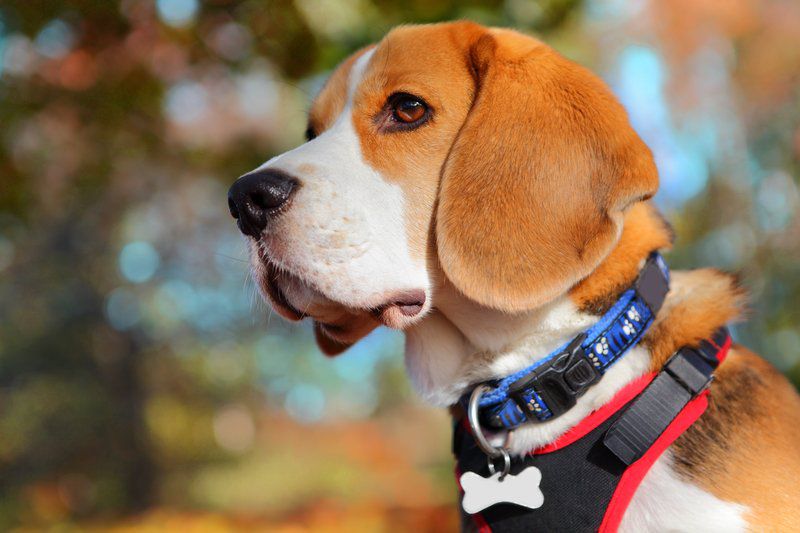As a dog’s parent, make sure your dog feels comfortable. Although they may like their harness, is it safe to wear it all day long? Some dog owners keep their dogs in harnesses, while others object to this practice As a dog owner, you need to weigh the pros and cons and make the best decision for your dog. Next, I will briefly introduce the benefits and risks of letting your dog wear harnesses all the time, as well as some tips and techniques, and how to make your dog safer and more comfortable to wear harnesses for a long time.
The Pros of Leaving on a Dog’s Harness

Here are the benefits of keeping your dog in a harness at all times, or at least most of the day:
The harness gives you something you can catch, which can quickly get your dog or puppy out of danger or prevent your dog from escaping.
- It’s much faster to take your puppy or dog outdoors – just tie the leash to the harness and you can go out. This is especially convenient if you live in an apartment or need to take your dog out to the bathroom every time.
- After wearing harnesses, the dog will be more obedient and obedient.
- Some dog owners claim that wearing a harness to their anxious dog will make it calmer, such as during a storm.
- A dog with a very short neck, such as a pug, cannot wear a collar with an identification tag around its neck, so a harness is a good substitute if the dog gets lost during the day (although it is always a good idea to implant a chip into your dog, rather than just rely on the tag for identification).
- If you have a puppy or dog that needs supervision for any reason, the harness will give you something to tie the dog around you and keep it nearby. This is much safer than using a collar, which can suffocate the dog or cause neck injury if the dog pulls it
- Wearing a harness for a period of time can make your dog accustomed to wearing harnesses, which can make walking easier.
- If your dog runs off or onto the road at night, a harness with reflective stripes can reflect the lights of the car, so that the driver can see your dog and avoid bumping into it
- Old or sick dogs who need help to walk up and down can wear a harness with a handle. Just grasp the handle and you can help your dog do what he needs.
- Service dogs and many working dogs are required to wear harnesses to help them complete their work.
The Cons of Leaving on a Dog’s Harness
Making your dog wear a harness all the time has advantages and disadvantages, such as:
- The harness will irritate the dog’s skin, especially if it is too small, too tight, worn too long, or made of rough materials.
- If the harness is worn for too long, it will rub the dog’s skin and the dog will lose hair in that area
- The harness can rub the long fur skin to make the fur knot or knot.
- When the dog is sitting, the seat belt on the chest will bring pressure to the dog and make the seat belt very uncomfortable.
- Dogs with pica and dogs spend a lot of time biting seat belts and swallowing debris, which is a serious risk of suffocation.
- If the wet harness stays on the dog for too long, the dog may have a skin infection.
- The harness can be hung on the things your dog passes by to trap your dog.
- If not removed and cleaned regularly, the Harness will become very dirty and start to emit odor.
Tips For Leaving on a Dog’s Harness

If your dog needs to wear a harness all the time, or you want him to wear a harness all the time, here are some tips and techniques to make your dog wear a harness as safely and comfortably as possible for a long time:
Make sure the seat belt fits. Make sure the seat belt is not too tight or too loose. Your dog should be able to walk normally with a harness on. If your dog walks funny or differently with a harness, wearing a harness for a long time will have a negative impact on the dog’s walking style and posture.
At the same time, the back of the harness should be 2 to 3 inches behind the dog’s front legs, but not beyond the chest.
Do not use the front strap. Choose a harness without a strap running through the front of the dog’s body. These are suitable for walking, but if the dog needs to wear the safety belt for several hours, it will be uncomfortable, because when the dog sits down, the belt will become very tight and the chest will be uncomfortable.
Check for ulcers. Check the skin under the seat belt every 3 to 4 days for abrasions or irritation. If there is some skin irritation, remove the harness immediately, let the dog’s skin breathe and repair, and then put it on again.
Alternate use.
Consider purchasing more than one harness and replacing the harness every week or so. When you remove the strap, be sure to clean it, so that when you want to use it again, it will be very beautiful and clean.
Don’t let your dog overheat. Do not wear a padded harness for a long time because the dog may overheat, especially in warm weather or with a double coat.
Can My Dog Sleep In Harness?

Although you can keep your dog tied to a harness all day, you may want to take it off at night. In some cases, some dogs like the extra pressure around their bodies and like to stay in harnesses. However, in most cases, you do want to remove the harness before your dog goes to bed.
Like humans, dogs like to toss and turn at night. You may have seen your own dog have vivid dreams, dreaming that his legs are moving. If your dog is an energetic dreamer, the harness may accidentally get stuck in its cage or other things. As a result, the dog may suffocate and cannot be freed from the harness.
At the same time, your dog’s skin needs to breathe from time to time. Wearing a harness at night can cause sores under your dog’s legs and stomach. In addition, the seat belt becomes uncomfortable when they lie on their side. Unless your dog needs a harness, it’s best to take it off before going to bed.
Are Harnesses or Collars Better?

The Collar is a substitute for the collar. Many dog parents choose to harness their furry friends. When you take your dog for a walk, the harness is the best way for them to explore. The neck and trachea were not strained.
These harnesses are ideal for dogs with limited respiratory and neck problems. When you go out for a walk, you don’t have to worry about these problems for your dog.
A harness can improve your level of control while still giving your dog enough movement. The pressure is spread over a larger surface area than the coupling. The collar, on the other hand, has limited control over the dog’s neck.
If you have a problem with your dog’s pulling, consider buying a harness that doesn’t pull. When the puppy starts pulling, the tension of the belt will turn them towards you. This is a perfect solution for owners who cannot control their dogs while walking them.
A seat belt is safer than a collar. They can help prevent accidents because the harness is securely attached to the dog. With a collar, your dog can easily slip out into traffic. If you want to be safer, consider choosing a seat belt.
The ridgelet also has some drawbacks. For example, they are more inconvenient than collars. You can easily collar a dog. However, with a seat belt, it takes more time to secure. At the same time, most ridge nails do not have a convenient location for ID tags.
If your dog gets lost, make sure they have proper identification before they go home. When you walk every day, you may want to use a collar and harness to solve this problem. When you get home, take off your collar, put on your harness, and leave.
Final Thoughts
It is absolutely unnecessary to keep your dog in a harness all the time, especially when they are in the house.
The safety and comfort of your dog depend largely on your choice. Be sure to listen to all the clues your dog may show you to make your dog happier and safer.
Dogs mainly use body language to communicate, so be sure to pay close attention to your dog’s body signals to ensure that he is comfortable with the new dog.





